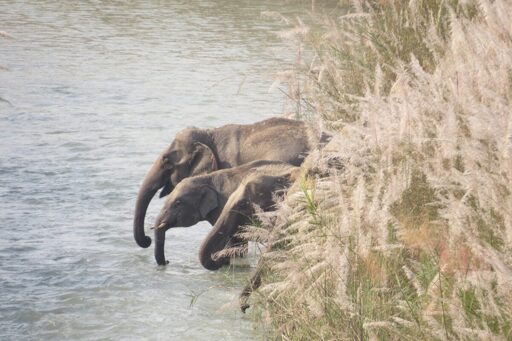KATHMANDU — Nayaram Sunar vividly remembers the day at the end of monsoon season in 2019, when rain was pouring in relentlessly on his sister’s corn field in the village of Madhuwan in western Nepal’s Bardiya district. A wild elephant (Elephas maximus) not only feasted on the harvest but smashed the family’s modest house. His sister and her children fled to a neighbor’s home for safety. “I felt terrible,” Sunar recalls. “That’s when I thought: Something must be done.” Sunar, 48, lives in Kailashi, a village nestled between Bardiya National Park and the Kailashi Mid-Hill Community Forest in Nepal’s Lumbini province. Here, human-wildlife conflict is part of everyday life. “We couldn’t even earn 5,000 rupees [$36] from 5 kattha [6,800 square feet] of land,” he says. “The crops didn’t survive. Elephants, wild boars, deer, monkeys — they destroyed everything.” A 2023 study in Bardiya’s Khata corridor, a critical elephant migration route, found that up to 45% of annual crop yield was lost to raids in some settlements, particularly those near rivers and forests. Households closer to park headquarters or protected by patrols experienced significantly less damage. Sabitri Sunar, secretary of the Sahara Farmers’ Group, at her turmeric-plantation. Image by Prem Bishowkarma. A year after the incident, Sunar mobilized his neighbors to form the Sahara Farmers’ Group, now 40 members strong and made up mostly of Dalit and Indigenous families from Madhuwan and Thakurbaba municipalities. With training and turmeric seeds provided by the Dalit Women’s Upliftment Association, a local nonprofit, they…This article was originally published on Mongabay
From Conservation news via this RSS feed


